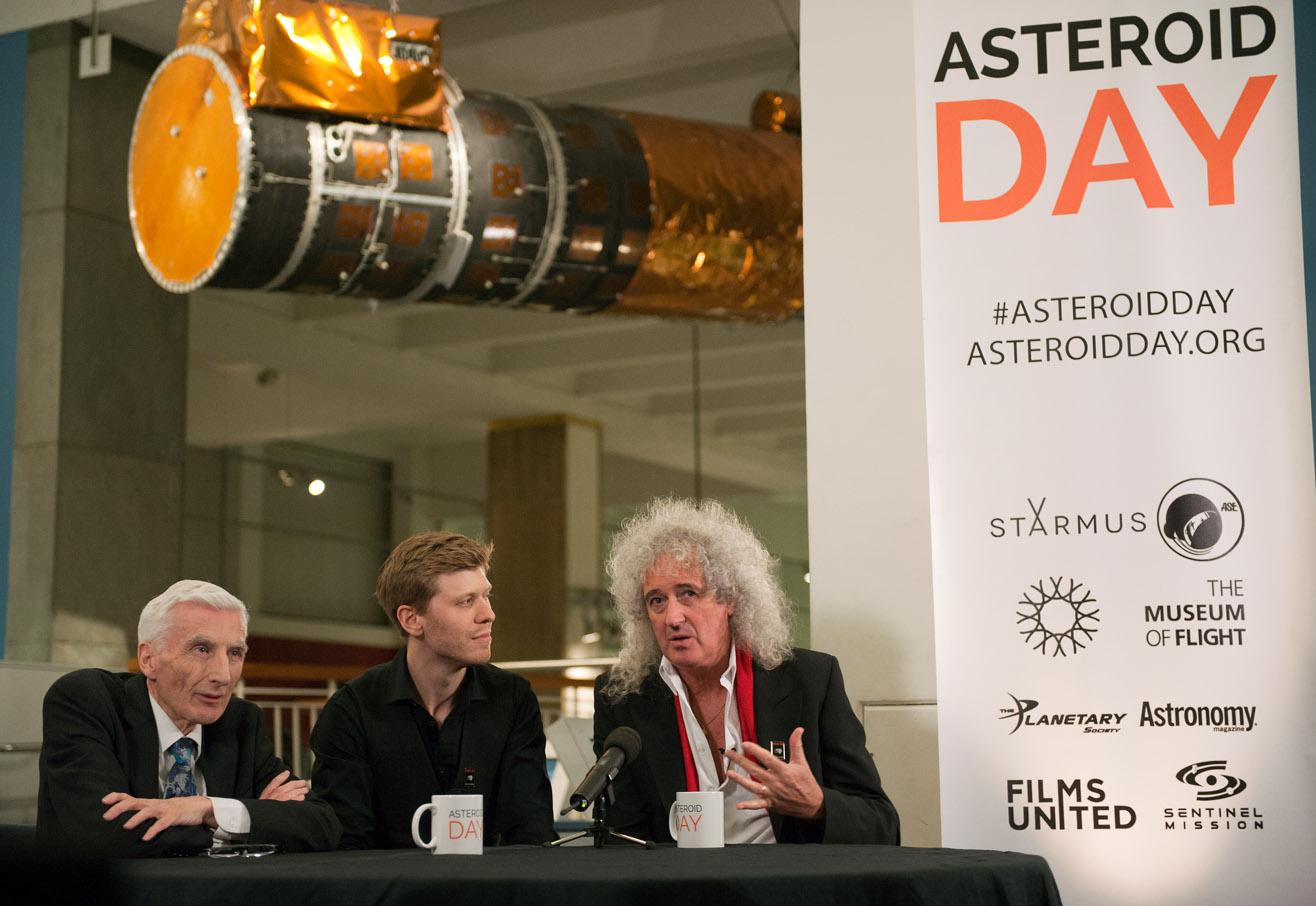Asteroid Day was unveiled last night in the Science Museum, as part of a global news conference lead by Lord Martin Rees, Astronomer Royal and former trustee, and the astrophysicist and Queen guitarist Dr Brian May.

Launching an international awareness day and accompanying declaration the organisers hope to draw more attention to the threat posed by the million or so asteroids in our solar system that have the potential to destroy a city. To date, we have discovered around one per cent, fewer than 10,000.
The event in the museum’s Cosmos and Culture gallery, chaired by organiser Grigorij Richters, was linked to the California Academy of Sciences in San Francisco where astronauts Tom Jones, Ed Lu, and Apollo 9 Astronaut Rusty Schweickart addressed the meeting.
A focus was the release of the “100x Declaration”, read out in the museum by Lord Rees, calling for a 100 fold increase in the detection and monitoring of near Earth asteroids that threaten human populations.
Lord Rees said: “We must make it our mission to find asteroids before they find us.”
“The human race has been living on borrowed time,” added May, who said he was honoured to be in the museum. “Nobody knows when the next big one will hit. It takes just one. We have a huge bridge to cross. But we do have all the technology to avert disaster.”
They urged the adoption of Asteroid Day on June 30, 2015 – the anniversary of the 1908 Tunguska explosion, caused by an impact which destroyed 800 square miles, the equivalent size of a major metropolitan area, in Russia.
The 100x Declaration was signed by more than 100 noted figures from 30 countries, including Richard Dawkins, Anousheh Ansari, Stewart Brand, investors Shervin Pishevar and Steve Jurvetson, Alan Eustace and Peter Norvig of Google, Peter Gabriel, Jane Luu and Jill Tarter.
There were also many who had links with the Science Museum including Brian Cox, Kip Thorne (through Interstellar), and Helen Sharman.
The declaration was signed by around 40 astronauts and cosmonauts, such as Chris Hadfield and Jim Lovell. “We have the technology to deflect dangerous asteroids through kinetic impactors and gravity tractors but only if we have years of advance warning of their trajectories,” stated Dr Ed Lu, Shuttle astronaut, designer of the gravity tractor and cofounder of the Sentinel Mission, a space-based infrared survey mission to discover and catalogue larger asteroids.
The point, he said, was not to push any one particular technology or project but rather to raise awareness and encourage the discovery of asteroids in any way possible.
Currently, governments around the world spend up to $50 million per year toward this end, and scientists find about 1,000 near earth objects annually, said Lu.
Rusty Schweickart, who with Lu co-founded the B612 Foundation as part of their mission, said the magnitude of the threat dawned in the wake of the pioneering work of Profs Luis and Walter Alvarez, who linked an impact 65 million years ago to the demise of the dinosaurs, and when Comet Shoemaker–Levy 9 broke apart and collided with Jupiter in July 1994. “We need to accelerate the discovery of these objects.”

Meanwhile, Bill Nye, the Science Guy and CEO of the Planetary Society, joined the event via Google Hangout from New York. He told the meeting: “Let’s get going.”
Roger Highfield is Director of External Affairs.